Design Means Business: The highlights
Design Means Business 2017 was an absolutely fantastic conference, and we hope you enjoyed it as much as we did! For those of you who missed it, here are our highlights of the day.
We started the day by collecting our coffees, catching up with the network and settling down to hear from our first speaker, Nicola Millard.
Nicola Millard
British Telecom
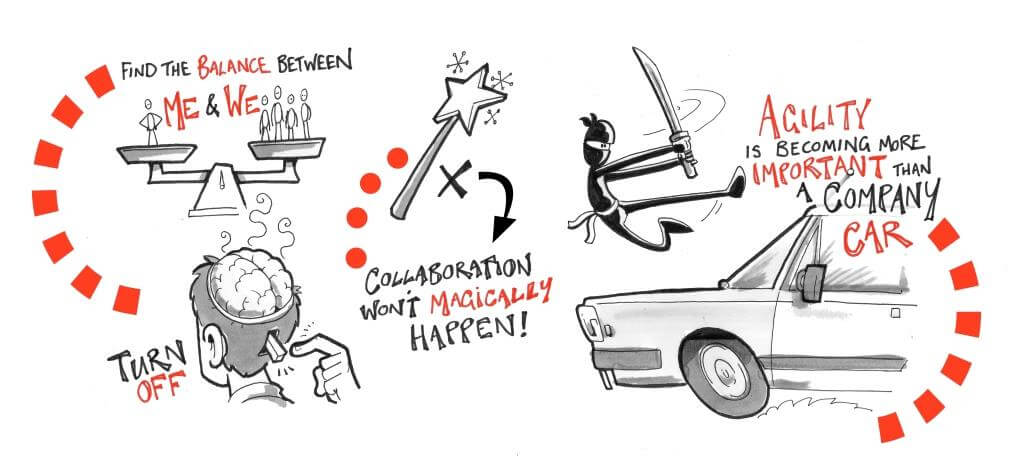
Nicola opened the day perfectly by exploring the question; how can organisations innovate more effectively by better understanding the role of collaboration? Her extensive experience and her background in psychology made for a highly informative presentation. She posits that 'innovation happens at ground level and is fuelled by networking, collaboration, iteration and making' which sets the stage well for the main themes of the day.
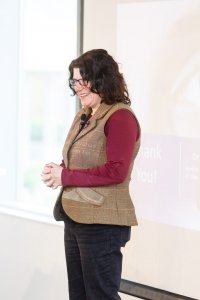
Her presentation was set in the context of the modern workplace, where this is no longer a typical office environment, but instead can include any number of environments; both physical and virtual. This raises another key question; in what a presenter later in the day described as the 'new landscape of work', where many working environments exist together, how can we facilitate collaboration in a global world that is virtual as well as physical?
The head of the Customer Insight and Futures team for BT Global Services offered insight into BT’s innovation approach. This included specific problem solving methods of “hot housing” and “co-opetition” - a combination of collaborative and competitive activity. Generational differences in working culture were touched upon, including younger workers’ comparative comfort with collaborative working and the need to tailor an organization’s innovation approach to their workforce demographic. Viewing differences in working preferences by life stages rather than generation, also offered a different approach to the millennial workforce debate.
A balanced examination of the pros and cons of collaborative working acknowledged challenges such as meeting the need for individual recognition and a shared sense of purpose, as well as “collaboration overload” and the importance of disconnection and thinking time.
Incorporating broader observations of the evolving workplace, key topics included the role of increasingly agile working styles, individuality and collaboration in productivity. Varying levels of collaboration were discussed in context of the trading floor, including unproductive isolationists, echo chambers and balancing of the “we” and “me”. Particularly interesting was diversity’s potential to break down echo chambers but also risk of fragmentation, and use of video and audio to build trust within remote teams.
Also touched upon was the importance of bringing hearts and minds along within technology innovation.
Through Nicola's use of research from her field of expertise, she took the audience on a tour through many aspects that psychologists believe to impact upon peoples' productivity, particularly in respect of collaborative working and innovation.
The fascinating talk concluded with the question as to who owns collaboration within an organization, observing the role of multiple departments within its implementation.
Michel Cloosterman
Lego Serious Play
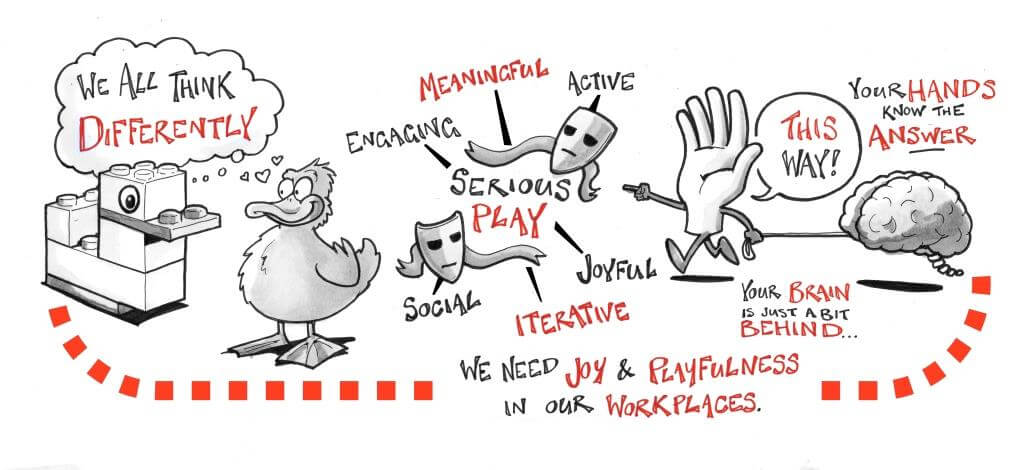
Lego. What's not to like? Michel's presentation was great fun as well as conveying a serious practical message about collaboration and about creativity. The talk navigated through topics such as tacit knowledge, group collaboration, and self-reflection, all of which are supported by this innovative use of Lego as a facilitation tool.
The 'build a duck' exercise showed in a very explicit way how conceptualisations of a particular thing can differ radically between individuals. The workshop approach to the presentation also demonstrated the communicative power of physical objects, with Lego as the creative platform that supports this higher level of communication.
The methodology behind Lego Serious Play emphasises participant engagement and ability of all to contribute to sharing knowledge, alongside the principle of using the connection between hand and mind to promote realization of insights or solutions already held within the team.
The importance of an environment of play was described, alongside five key characteristics of playful activities: play should be meaningful, socially interactive, iterative, joyful and actively engaged.
Participative design tasks including the Lego were met with much enthusiasm, showcasing the individuality of the audience and introducing the reflective properties Lego could inspire.
The presentation prompted audience consideration as to how such a tool could be used within their own organisations and areas of expertise, including within elderly care.
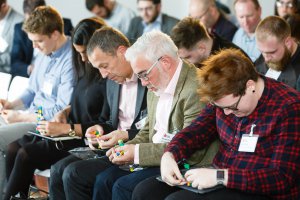
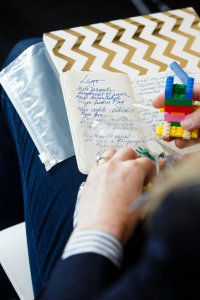
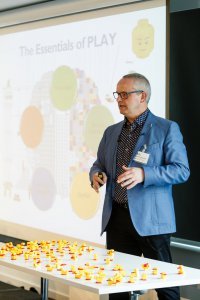
Lesley Marshall
DECIDE Branding Agency

Lesley presented a methodology used by her company to analyse and interrogate how people engage visually with media, particularly packaging. DECIDE call this methodology 'D3 Thinking' and they apply it in the field of FMCG, or Fast Moving Consumer Goods, to drive better visual communication of a brand's message.
Insight was provided into trends within the FMCG sector of greater shopper choice, convenience and connection. Also acknowledged was the role of personalization through data collection, multiple customer touch points and increasingly blurred channels to market.
Case studies offered fantastic insight into use of tools of d3 thinking, d360 and d3eclipse, with three decision-making biases of power, evidence and opinion key to the approach. Through research, d360 identifies and maps comprehensive shopper profiles, using multidimensional behavioural profiling to guide design approach. d3eclipse allows visual comparison of design strategy. Developed in practice with academic collaboration, the tools have been used with multinational companies including Fortnum & Mason, Boots and Sainsbury’s.
Enabling early identification of problems within design briefs and reduction of subjectivity within the design process, compelling benefits of d3 thinking of creating more effective design solutions, reducing commercial risk and increasing speed to market were indicated by the detailed presentation.
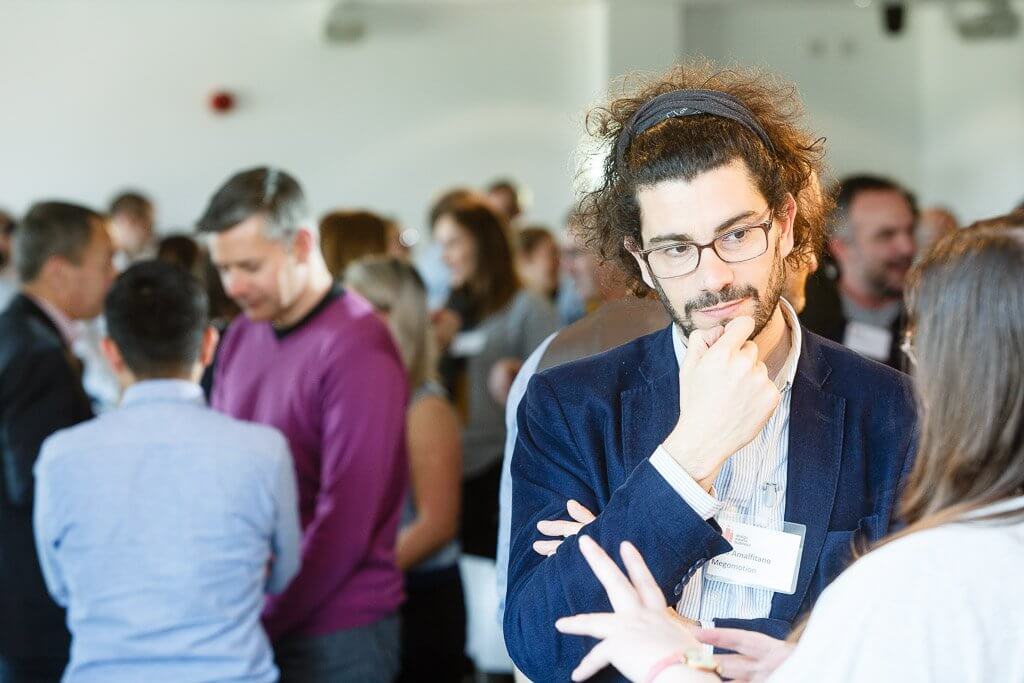
Mark Catchlove
Herman Miller
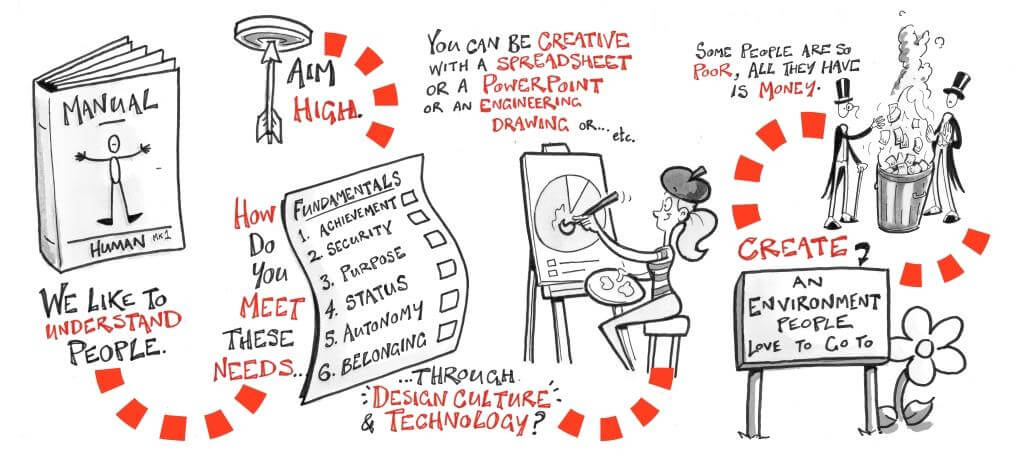
Mark's highly engaging presentation follows on nicely from that of Nicola Millard, by elaborating on the importance of the physical working environment in supporting collaboration and innovation, using the Herman Miller concept of the Living Office.
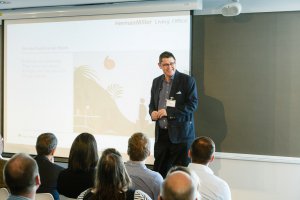
Here he describes the 'new landscape' of work, where the physical and virtual working environments begin to blend and co-exist. Herman Miller rely on a human-centric approach to designing working environments, where each person is considered as an individual, and the spaces are designed to give flexibility and plurality in use.
Offered was a comprehensive view of the Herman Miller’s research findings, including the identification of 10 modes of work, representing time spent with others and alone. A key takeaway from the presentation was the need for balance and harmony: between the needs of business and the individual and between time for collaboration and time to reflect. Audience participation encouraged meeting new people to share the makings of a good workday.
Also introduced were six fundamental human needs Herman Miller describe as driving those in the workplace: achievement, security, purpose, status, autonomy and belonging.
Shared were provocations challenging workplace design: the need to provide satisfaction to workers empowered to act as ‘shoppers’; providing freedom and tools to support individual working styles; the power of instincts; the importance of community providing value bigger than the sum of parts; the need for passion, purpose and growth in ongoing evolving spaces and allowing technology to sink into the background by expecting it to work seamlessly.
The compelling presentation advocated the potential of a holistic approach to places, culture and technology in supporting prosperous (here importantly meaning both happy and productive) workplaces. The value of a people-centered approach was clearly advocated through the assertion that “companies don’t come up with ideas, humans do”.
Amanda Scacchetti
Mamas & Papas

Amanda's presentation comprised a very interesting case study of the strategic role of design within a commercial organisation. Her story gives a compelling account of how she leveraged design thinking and rich, ethno-centric research to revitalise Mamas and Papas market
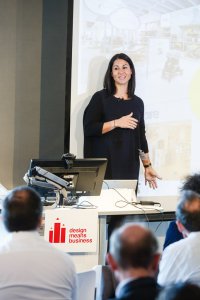
offer.
Again, there is an emphasis on focussing on people as individuals; in this case the focus is on people, but not as customers, but as parents.
Amanda describes how she used an empathetic approach to engage directly with parents, gathering rich qualitative research, and designing with the consumer, rather than for the consumer.
Jennings presented Mamas & Papas’ story of innovation in response to unfavourable conditions within the baby and children’s product market.
Demonstrated were models including critical uncertainty matrices and Doblin’s ‘10 Types of Innovation’ framework, used to guide an organizational innovation strategy asking “bigger questions” to move beyond the previous incremental change to provide innovative new offerings. Successful leveraging of unused assets within the business to expand the market available was described, with Mamas & Papas developing underused repairs capacity to recondition used pushchairs for the second hand market. The Q&A session expanded insight into the business benefits of pursuing this more circular business model, alongside the differences in suitability for capturing the second hand market across product lines.
The presentation explained focus upon growing the brand through deepening relationships with customers, achieved by changing towards a more outward-looking research approach exploring users’ lives rather than their view of the Mamas & Papas brand. The story provided a fantastic example of the importance of testing organizational beliefs about customer behaviour. With developing empathy with millennial mums key to their business strategy, insight was provided into the company’s research findings, with five key needs identified in helping to provide confidence and balance valued by the customer.
Tom Moran & Lee Allen
TH_NK

Artificial intelligence is here and it's here to stay; that was the message that the duo from TH_NK were pressing forward during their presentation. Beginning with a prophecy of how AI might exist in the distant future, as a self aware entity in itself, they moved on to how AI is already in use in many of the things we interact with daily.
Posing the question, 'how will you consider the power of AI in your business?', Tom and Lee made recommendations to the audience of the power of 'narrow AI'. This is the sort of artificial intelligence that is in existence now, and will continue to develop rapidly. Set in comparison with the internet revolution, that turned some early adopters into millionaires, and bankrupted others who didn't think the idea would catch on. This talk was in part a word of warning, an AI revolution is on the way, and also a series of suggestions in respect of how organisations can already start to benefit from this new technology.
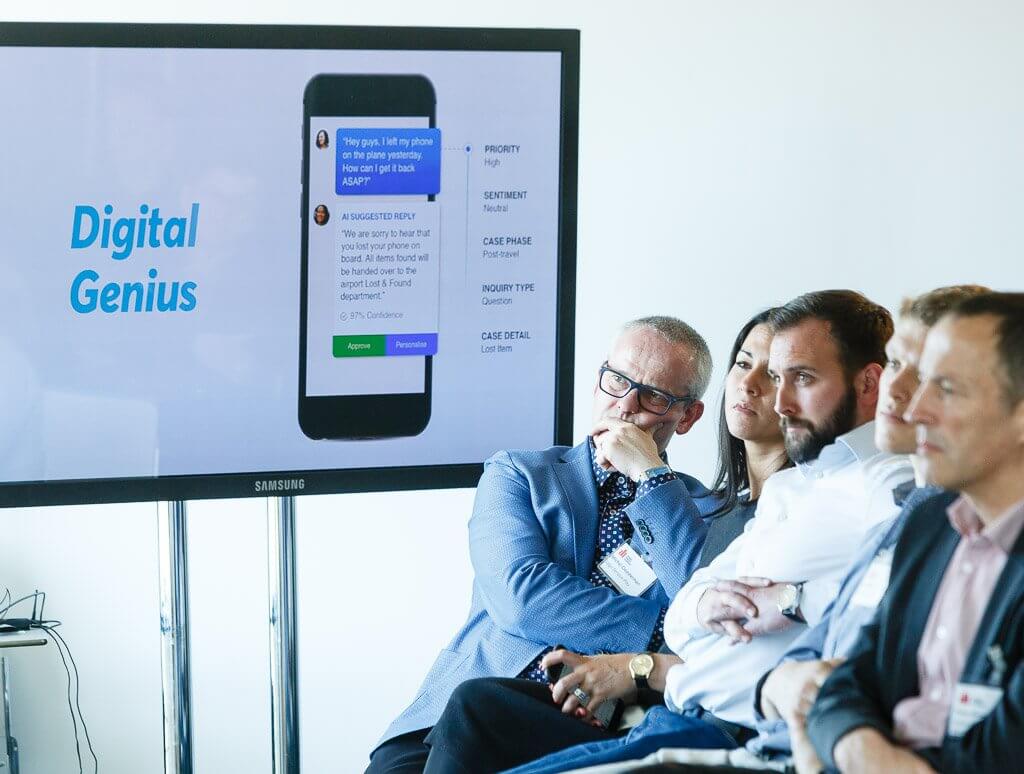
TH_NK believe that AI represents disruptive innovation, and that rapidly increasing influence to all businesses will mean consideration within business models will likely be essential within as little as 10 years. A brief history of development of Artificial Intelligence provided historical context to cutting edge technologies. Identified were key areas currently leading AI progress, of parallel computation, big data and improvement in algorithms.
The talk posed provocative questions as to the future of Artificial Intelligence, including technological capability, and consequences and acceptance of technology.
So much to take in in such a short space of time! We could not thank our brilliant speakers enough for their fantastic presentations. We hope to see you again for next year's conference - in the meantime, check out some of our other events and get to know our network, ready for Design Means Business 2018!
Many thanks to Ollie Hemstock and Charlotte Waite of Northumbria University for their contributions to this article. Design Means Business is an annual conference ran by Design Network North. Design Network North is part of RTC’s new programme called ‘Designing Better Business’ – launched in 2016 - which will provide support for north east businesses looking to continue to innovate and design better world leading products.
RTC was founded in 1989 with the sole purpose of helping businesses innovate and create new higher value products. Today, the business operates out of offices in Sunderland, Gateshead, Leeds and Daresbury and specialises in helping companies develop new products, embed new skills through training and access funding for innovation.
‘Designing Better Business’ is part funded by European Regional Development Fund, as part of the European Structural and Investment Funds Growth Programme 2014-2020.